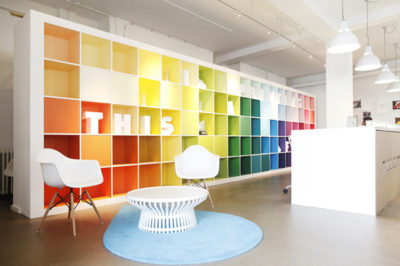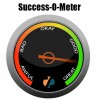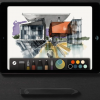Tips / Activities to Improve Your Creativity
If you work in a creative industry, there’s no doubt you have suffered from creative exhaustion or burnout. Maybe you feel stuck when thinking of fresh ideas or you’re looking to increase your creativity for a project. Many people think that creativity is something you either have or don’t—that it cannot be learned or taught. While some people may have more natural creativity in certain areas, there are several ways you can jumpstart your creative thinking, no matter your industry or job title.
Create Environments that Foster Creativity
Take time to figure out what environments contribute the most to your creativity—and which ones stifle your imagination. Research has shown that moderate, ambient noise levels are best for creativity and productivity. Within these noise levels your brain works harder to process information, which promotes more abstract thinking. Keep the temperatures warmer—around 77 degrees—to help you focus all your concentration on the task at hand. Dimmer lighting contributes to more creativity since it helps us feel less restrained—so consider lowering the lights before a brainstorm session
If you work in an office where you don’t have much flexibility in terms of décor or the level of volume of coworkers, consider taking some time out of your week to go to an environment where you can think. This often means spending time away from distractions and noise.
Creating an inspiring environment can mean creating mood boards, using colors that relax or inspire you, or hanging quotes from creatives that you admire. Building a space where creativity can flourish goes beyond your office or desk. When brainstorming for a new initiative or working on a new project, don’t be afraid to map out your ideas and thoughts creatively. Use colored markers and flip charts or bring in other elements that will help you interact with the ideas at hand.
Wherever you work and create, don’t be afraid to mix things up. A static environment will grow stale when what you need is a habitat that helps you engage and think outside the box.
Stay Curious
Curiosity and creativity are strongly connected. If you aren’t interested in learning new things, what does that say about your level of innovation? Learning new things can provide a big boost to your mental facilities—and it doesn’t just have to be music or chess.
If you already have hobbies or activities that you enjoy, keep learning and growing in those areas. Doing things that you enjoy and about which you are passionate helps you relax and can also jumpstart the creative process. This can certainly extend to your work—are there areas of your role or industry that interest you? Learn more about them, whether that’s through training, online research, or networking outlets.
You can also learn a lot from other industries and functions—is there a successful business or thought leader that you admire? Learn what makes them successful. Exploring innovative ideas outside your professional sphere helps you look at things from different perspectives while increasing your knowledge about another area.
Engage with Other People
Sometimes you may need a vacuum to think and brainstorm in peace, but there’s only so far you can get on your own. Engaging with other people can help break any mental blocks you may have and expand your capacity for creativity. Find opportunities for collaboration—whether its through more formal brainstorming sessions or casual idea-sharing. Asking for feedback from trusted peers brings in different skill sets, knowledge, and experiences that can help you think more creatively.
Ask questions of other people. Learning other perspectives and viewpoints about a problem or project can help you recalibrate your thinking and to start developing different angles to address the task. Don’t seek people out only to help you, though. Consider teaching others about what you do—explaining your processes may help you rethink certain areas and discussion with learners can help prompt innovative ideas.
Take a Break
If you feel burned out, sitting at your computer trying to make yourself be creative is the last thing you need. Taking a break helps your brain recharge. There are many ways you can take a break throughout your day, but it’s important to spend time away from your desk at the very least.
Take a walk or hit the gym to relieve stress and boost the production of endorphins. The average worker spends up to 15 hours per day sitting. Sitting all day is bad for your health and your overall mood—directly affecting your creativity. Research from Stanford has proven that walking helps boost inspiration and increases creative output by 60% on average. Both Steve Jobs (Apple) and Mark Zuckerberg (Facebook) have held walking meetings.
Activity certainly helps power creative thinking, but so does rest. Make sure to get enough sleep. Take opportunities to fully unplug and give your brain a rest from work. Recharging your brain is one of the best things you can do to promote creativity and innovation.
If you are feeling creatively stifled or in danger of a creative burnout, consider trying one or all the tips above. Don’t try to tackle things alone—collaborate with others and ask for feedback when you get stuck to bring in fresh perspectives. Curiosity feeds creativity in many ways—keep learning new things and pursuing the things you enjoy doing.
Create or seek out environments that have the atmosphere you need to be most creative. Step away from your desk or computer and go for a walk to inspire more innovative thinking. And, remember, boosting your creativity also helps you work more productively.
What tasks or activities do you find helps you stay creative? Comment below and let us know!






